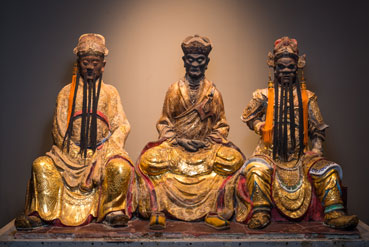National Palace Museum | Taipei
For many, the mere fact that Taipei has the world-class National Palace Museum justifies time in the capital. This stupendous repository displays the highlights of a collection that was the personal property of each reigning emperor of China until 1925, when the last vestiges of the imperial system were abolished by the Nationalist Republic of China.
Built up over the better part of a thousand years and now numbering around 700,000 items, the collection ranges from bronzes to ceramics to ink paintings to jade treasures more than 5,000 years old. At any given time, a mere one percent of these valuables are on public display. Work to greatly expand exhibition space is underway, and the museum’s Southern Branch has been open to the public since late 2015.
It’s something of a miracle that this glorious museum exists at all. Originally established inside Beijing’s Forbidden City, it was moved south in the 1930s when the Japanese began threatening north China. The cream of the collection was packed up again and moved several times during World War II and the Chinese Civil War that broke out as soon as the Japanese had been defeated. Finally, the crates of rare books, wood-carvings and bronze funerary items were shipped to Taiwan in early 1949, where they were stored underground until the museum opened its doors to the public in 1965.
Many of the most impressive curios in the collection were gifts from senior officials hoping to curry favour with the emperor, or came as part of the dowries which arrived with new concubines. Others were tributes from vassal states such as the Kingdom of Korea and Tibet, while a few were presented by Western diplomats during the 18th and 19th centuries. Not all of the works created in China were undertaken by Chinese artists: ‘A Hundred Steeds’, for instance, is a masterpiece by Giuseppe Castiglione, an Italian-born Jesuit who became a court painter in Beijing in 1715.
Few visitors can do justice to the museum in less than two hours, and real aficionados of Asian art may well spend the whole day here. Luckily for the latter, three restaurants inside the museum serve a range of meals, snacks and hot drinks. In addition to details of opening hours and special exhibitions, the museum’s website has transport information, plus everything tourists need to know about the twice-daily English-language tours. There’s no extra charge over and above the standard admission charge (currently around US$11) for these expertly guided introductions, but reservations are required. The morning tours are especially recommended as afterwards there’s plenty of time to return to particularly fascinating sections of the museum.

